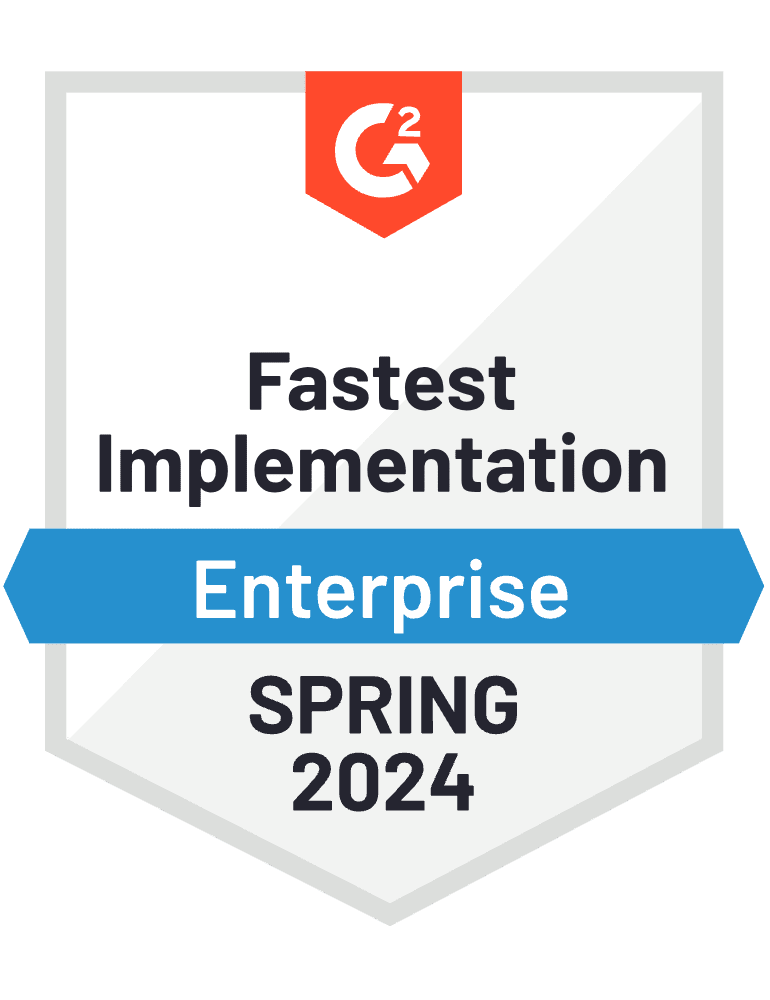How to Prepare for the EU AI Act Chapter 5
The European Union’s Artificial Intelligence Act is the world’s first comprehensive regulatory framework for AI systems. Chapter 5, focusing specifically on general-purpose AI models, imposes distinct obligations that providers must address by August 2, 2025. While complying with these requirements might initially seem daunting, organizations that approach this strategically may transform regulatory challenges into market advantages. Although there is no existing jurisprudence or case precedents, there are substantial financial risks of taking a wait-and-see approach to the EU’s enforcement of the Act. Enforcement will likely follow the path set by GDPR, with the first enforcement activities being substantial and requiring core changes to business processes in addition to substantial fines.
This guide explores practical approaches to meeting documentation requirements, representation obligations, risk assessment frameworks, and codes of practice. Rather than viewing compliance as merely a cost center, forward-thinking organizations can leverage these requirements to build deeper trust with customers and regulators, potentially gaining competitive advantages in Europe’s AI marketplace.
Understanding the scope and impact of Chapter 5
The EU AI Act employs a tiered regulatory framework that categorizes AI systems according to their perceived risk levels. At the highest level are prohibited practices, followed by high-risk systems subject to strict requirements, then limited-risk applications requiring transparency, and finally minimal-risk systems subject only to voluntary codes.
What makes Chapter 5 distinctive is its focus on general-purpose AI models rather than systems. This distinction establishes separate regulatory requirements with two primary classifications: standard general-purpose AI models and those presenting “systemic risk” – the latter facing additional obligations around evaluation, risk mitigation, incident reporting, and enhanced security measures.
Implementation timeline
The implementation timeline adopts a phased approach, with key Chapter 5 provisions becoming applicable on August 2, 2025. For general-purpose AI models already in the market before this date, providers have until August 2, 2027, to achieve compliance. This staggered timeline seems designed to give businesses sufficient time to prepare technical documentation, establish EU representation, and build appropriate compliance frameworks.
Organizations that prepare in advance will find themselves at an advantage. The complexity of these requirements, especially for models with systemic risk, suggests that early planning could reduce implementation costs and business disruption compared to last-minute compliance efforts.
What is a general-purpose AI model?
Under the EU AI Act, a general-purpose AI model refers to “an AI model, including when trained with a large amount of data using self-supervision at scale, that can be used in and adapted to a wide range of distinct tasks, that displays significant generality and is capable of performing tasks other than the ones it was trained for.”
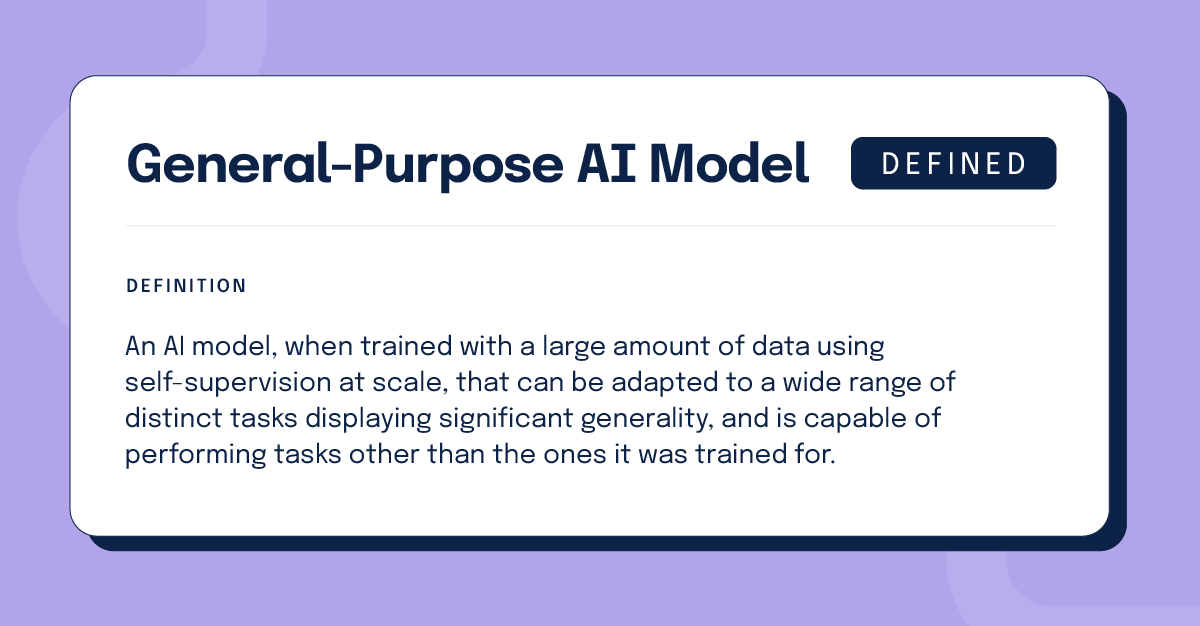
This definition appears broad enough to encompass foundation and large language models serving multiple applications. Importantly, the Act distinguishes between AI models (AI components) and AI systems (integrated applications with user interfaces).
Some general-purpose AI models face additional requirements when classified as presenting “systemic risk,” defined as having “high-impact capabilities” that could significantly affect public health, safety, fundamental rights, or society. Models generally meet this threshold when computational resources used for training exceed 10^25 floating-point operations. However, the European Commission maintains the authority to designate models as having systemic risk based on other criteria listed in Annex XIII.
Understanding where your AI offerings fall within this framework is crucial to determining which regulatory requirements apply and what compliance investments your organization needs to prioritize.
Business stakeholders affected by Chapter 5
The impact of Chapter 5 extends across the AI value chain, affecting several categories of business stakeholders:
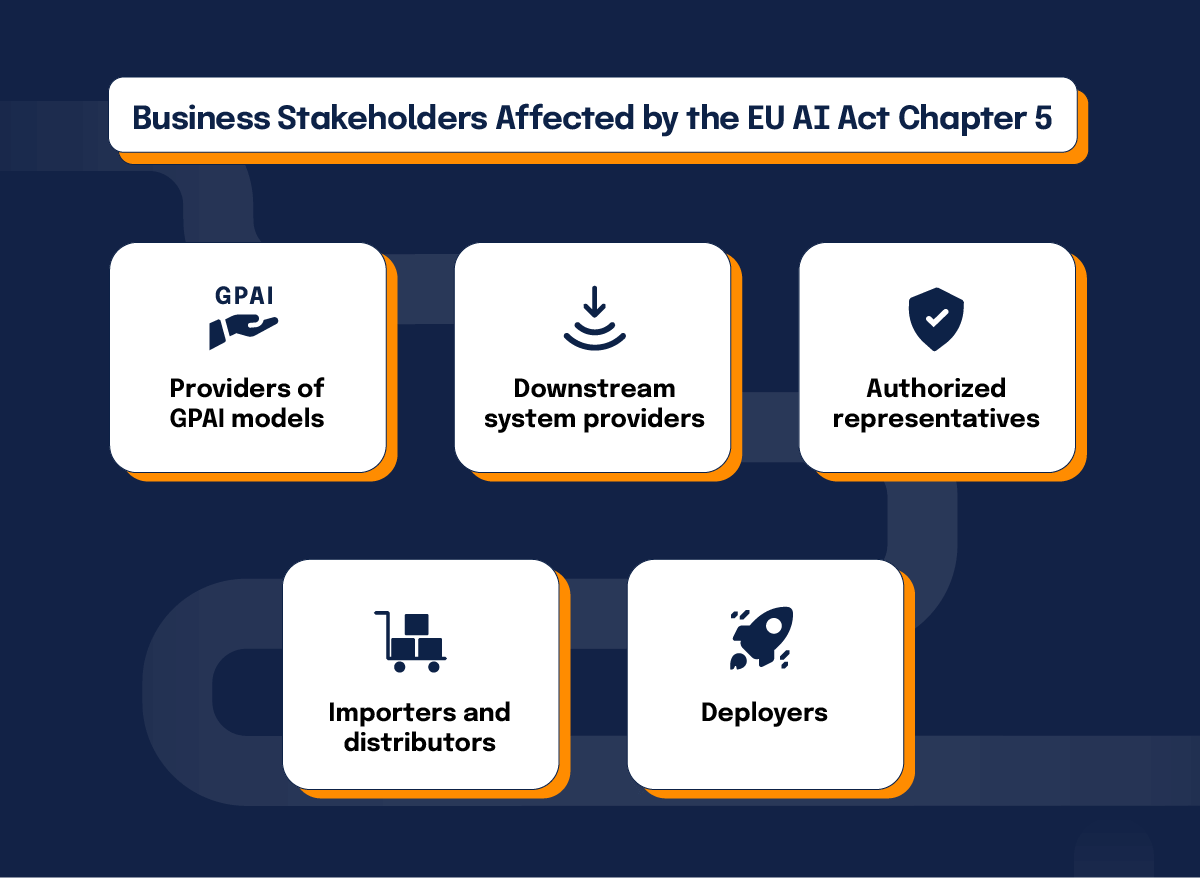
Providers of GPAI models
Organizations developing these models face the most extensive compliance obligations. EU-based and non-EU companies offering GPAI models in Europe must comply with Articles 53-56, with models classified as having systemic risk facing additional requirements.
Downstream system providers
Businesses incorporating GPAI models into their AI systems need sufficient documentation from model providers. This interdependence suggests a chain of responsibility that may affect product development decisions and partner selection.
Authorized representatives
Non-EU providers must designate an EU-based representative through a written mandate. These representatives are responsible for verifying documentation, maintaining records, providing information to authorities, and cooperating with the AI Office.
Importers and distributors
Entities placing AI systems from non-EU providers on the market must verify compliance with relevant requirements.
Deployers
Organizations using AI systems in professional activities have specific obligations regarding system monitoring and risk management.
The Act also includes a “requalification clause” where distributors, importers, or deployers may become providers if they put their name on a system, make substantial modifications, or change its intended purpose, potentially multiplying compliance responsibilities for some organizations.
Potential penalties and enforcement mechanisms
The EU AI Act establishes significant penalties for non-compliance. Providers of GPAI models may face administrative fines of up to €15 million or 3% of total worldwide annual turnover (whichever is higher) for failing to meet requirements. More severe violations related to prohibited AI practices could result in fines reaching €35 million or 7% of global annual revenue.
The European Commission, through its AI Office, has primary enforcement powers for GPAI model providers, while national authorities remain responsible for downstream providers and deployers. Among other powers, the Commission’s AI Office can request documentation, receive serious incident reports, facilitate codes of practice development, determine model risk classifications, and impose administrative fines.
A scientific panel of independent experts established under Article 68 may issue “qualified alerts” about models potentially presenting systemic risks, which could trigger classification without provider notification.
The scale of these potential penalties suggests compliance should be considered a material business risk requiring appropriate governance, resources, and strategic planning, comparable to how organizations approach GDPR data protection requirements.
Basic documentation requirements to prepare for Article 53
Article 53(1)(a) requires comprehensive technical documentation for GPAI models, covering training and testing processes and evaluation results according to Annex XI specifications. Rather than viewing this as merely regulatory paperwork, organizations might consider a strategic approach:
Create an integrated documentation framework: Design documentation that serves both compliance needs and internal knowledge management. This could include general model descriptions (architecture, capabilities, limitations), development process information, and additional documentation of adversarial testing measures for systemic risk models.
Implement automated data collection: Where possible, capture required information throughout the development lifecycle. This approach likely reduces compliance costs while potentially improving product quality through better documentation.
Standardize documentation templates: Developing reusable formats for each documentation component can save time and improve consistency across products, reducing documentation overhead for new models and updates.
Establish version control policies: Tracking changes to documentation and model versions creates audit trails that could not only demonstrate compliance but also protect against potential liability claims.
Develop verification procedures: Regularly assessing documentation completeness against Annex XI requirements helps identify compliance gaps before regulators do.
A thoughtful approach to technical documentation can transform this requirement from an administrative burden into a business asset that improves product quality and risk management while satisfying regulatory obligations.
Developing downstream integration documentation
Article 53(1)(b) requires GPAI model providers to prepare and maintain documentation for downstream providers who integrate these models. This obligation presents an opportunity to develop guidance that not only complies but potentially enhances customer relationships:
Create multi-level documentation
Developing documentation that serves different customer needs while protecting intellectual property might include general model descriptions, technical integration information, clear API documentation, and implementation examples. Well-structured downstream documentation serves dual purposes: meeting regulatory requirements and potentially enhancing customer relationships through clearer integration guidance.
Develop integration guides
Providing risk assessment guidance, input/output specifications, and limitation disclosures could reduce customer support costs while protecting against liability from misuse.
Draft confidentiality agreements
Defining boundaries between public and confidential information through standard NDAs might help maintain a competitive advantage while enabling compliance.
Build documentation delivery systems
Secure developer portals with notification systems for updates could improve customer experience while maintaining documentation version control.
How to implement copyright compliance policies
Article 53(1)(c) requires GPAI model providers to implement policies that comply with EU copyright law, particularly regarding content creators’ rights reservations. This obligation requires a multifaceted approach:
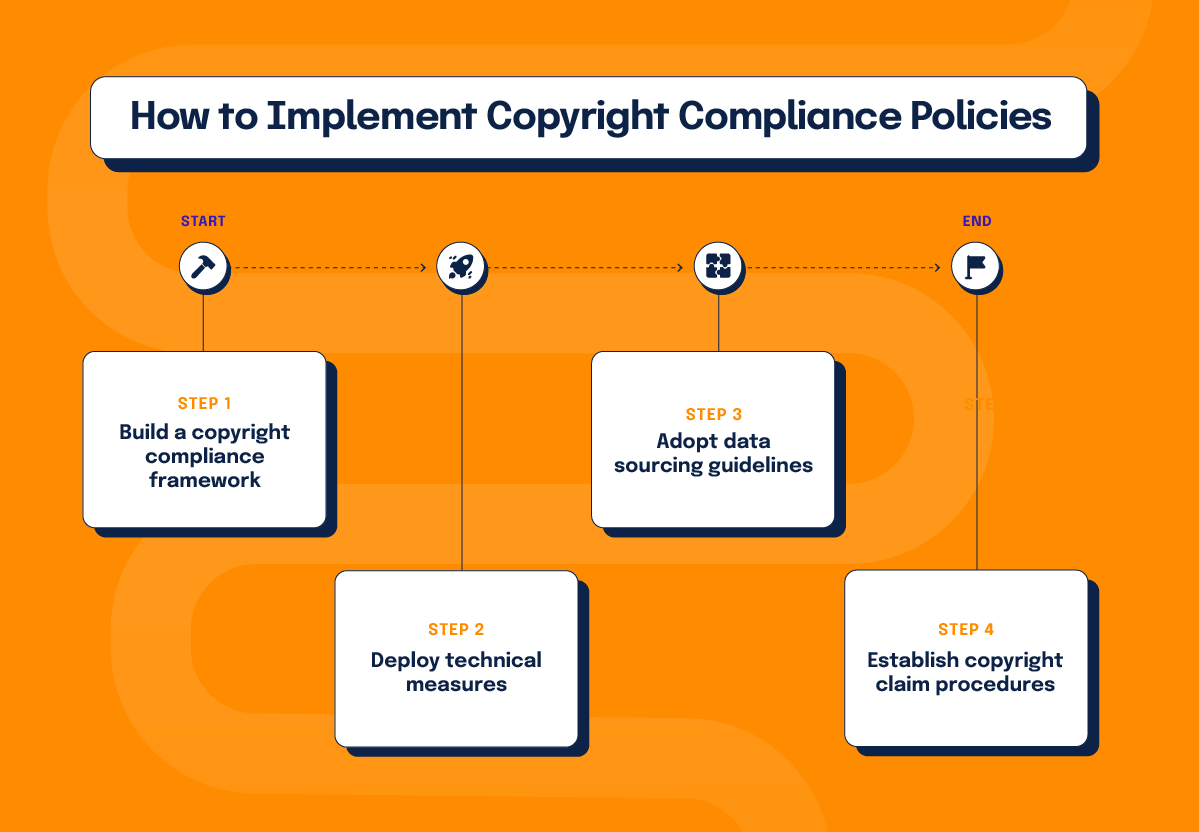
1. Build a copyright compliance framework
Documenting lawful training data sources, creating processes for respecting rights reservations, and developing takedown request procedures may reduce legal and operational risks.
2. Deploy technical measures
Implementing crawling rules that respect robots.txt directives, building systems to detect opt-out signals, and creating filtering mechanisms could help prevent costly legal challenges.
3. Adopt data sourcing guidelines
Prioritizing appropriately licensed data, using public domain content, or developing synthetic training data alternatives may reduce legal exposure while potentially improving data quality.
4. Establish copyright claim procedures
Creating dedicated contact points for rights holders and standardized claim evaluation processes could help manage potential disputes efficiently.
A comprehensive approach to copyright compliance might not only reduce legal risks but also demonstrate respect for intellectual property rights, potentially building trust with content creators and preventing costly model retraining due to copyright challenges.
Creating training content summaries
Article 53(1)(d) requires providers to create and publish “a sufficiently detailed summary about the content used for training of the general-purpose AI model” according to a template the EU AI Office will provide. When the AI Office releases its official template, these preparations may allow for faster adaptation while providing meaningful information to stakeholders without unnecessarily compromising competitive advantages. While the exact requirements remain to be specified, organizations might consider proactive approaches:
Develop data categorization frameworks
Classifying data by type, mapping content domains, and documenting data sources could help organize information strategically while protecting proprietary techniques.
Prepare quantitative descriptions
Providing volume metrics, temporal coverage information, and language distribution statistics may satisfy transparency requirements while protecting methodological details.
Document data quality processes
Outlining selection criteria, filtering methods, and bias mitigation approaches could build trust while demonstrating rigor.
Documentation management systems and maintenance procedures
Continuous compliance with Article 53 requires maintaining up-to-date technical documentation throughout the GPAI model lifecycle. A well-designed documentation management system seems likely to reduce compliance costs while potentially improving responses to market opportunities and decreasing regulatory risks. Implementing effective management systems could help:
Deploy a centralized documentation repository
Version control capabilities, access controls, and audit trails could protect sensitive information while ensuring documentation integrity.
Assign clear documentation ownership
Specific team members responsible for each documentation component, with defined roles and performance metrics, may improve accountability.
Define update triggers
Automatic review processes when models change, when training data changes, or when regulatory guidance evolves could help keep documentation current with minimal effort.
Establish regular review cycles
Defining appropriate review frequency based on model complexity and aligning with development schedules could contribute to continuous compliance.
Addressing Article 54: EU representation requirements
Determining if your business needs an authorized representative
Article 54 requires GPAI model providers established outside the EU to appoint an authorized representative within the EU. Proper assessment could prevent unnecessary costs for EU-established companies while helping non-EU providers avoid compliance gaps that might affect market access. Determining whether this applies to your organization involves several considerations:
Evaluate your company’s EU establishment status
Companies with physical presence or effective and real business activity through stable arrangements in an EU member state may not need separate representatives.
Check whether your models qualify for exemption
Free and open-source GPAI models might avoid representative requirements unless they pose systemic risks. To qualify, models need appropriate licensing and publicly available parameters, architecture information, and usage information.
Assess existing EU presence for potential representative functions
If representation is required, the representative must be a natural or legal person established in the EU capable of performing specific functions, including verifying documentation, maintaining records, and cooperating with authorities.
Selecting an appropriate authorized representative
For non-EU providers requiring representation, selecting the right representative involves finding an entity established in the EU that can effectively fulfill Article 54 obligations. Options for authorized representatives might include specialized compliance service providers, law firms with regulatory practices, qualified EU subsidiaries, existing GDPR representatives with appropriate capabilities, or industry association representatives where available. There are several criteria to consider:
Verify legal qualifications
Confirming legal establishment within an EU member state and authorization to act as a representative under local laws seems fundamental.
Evaluate technical competence
Knowledge of AI technologies and regulatory frameworks may reduce communication costs and improve effectiveness.
Assess resource availability
Sufficient staff to handle inquiries and systems to maintain documentation could prevent bottlenecks.
Verify independence and trustworthiness
Clear governance procedures for managing conflicts of interest and a track record of regulatory compliance might protect your reputation.
Establishing effective mandate agreements
Article 54 requires a written mandate between providers and their authorized representatives. A well-structured mandate agreement seems likely to satisfy regulatory requirements while creating clarity that helps both parties fulfill their obligations effectively. Developing a comprehensive agreement involves:
Define representation scope
Listing all GPAI models covered, specifying geographic scope, and establishing duration and termination conditions could prevent gaps and overlaps.
Outline specific duties
Verification of technical documentation, record maintenance, communication protocols with authorities, and cooperation procedures for investigations all seem necessary components.
Create information exchange procedures
Regular reporting requirements, escalation paths, and secure information-sharing systems could help to protect sensitive data while ensuring effective representation.
Address liability and financial matters
Clear responsibility allocation, insurance requirements, and fee structures could reduce legal risk.
Setting up communication protocols with representatives
Effective communication between GPAI model providers and their EU representatives enables prompt responses to authority inquiries. Well-designed communication protocols could reduce response time to regulatory requests while potentially minimizing business disruption and improving regulatory relationships. Developing structured protocols might include:
Build an information-sharing structure
Classifying information by sensitivity, implementing secure channels, and maintaining audit trails could balance security with access.
Create notification systems
Automated alerts for model updates, early warnings for compliance issues, and reporting protocols for serious incidents might prevent regulatory problems.
Develop escalation procedures
Response protocols for urgent inquiries and action plans for representative concerns about provider activities could help prevent compliance failures.
Establish regular communication rhythms
Scheduled status meetings, periodic compliance reviews, and coordination meetings might build relationship value beyond compliance.
Preparing for Article 55: Systemic risk assessment and mitigation
Determining if your GPAI model presents systemic risk
Article 55 imposes additional obligations on providers of GPAI models with systemic risk. Accurate classification could prevent both unnecessary compliance costs for standard models and potential regulatory exposure for high-impact models. Determining whether this classification applies to your models involves several considerations:
Calculate computational training resources
Documenting methodology for calculating floating point operations (FLOPs) and comparing to the 10^25 threshold is necessary for large models.
Document model capabilities
Recording parameter count, architecture, input/output modalities, benchmark performance, and user counts could help assess classification.
Prepare Commission notification procedures
Creating notification templates and tracking systems for models approaching thresholds may help ensure timely compliance with the notification requirement.
Document assessment rationale
Creating defensible documentation of classification decisions seems prudent regardless of the outcome.
Implementing model evaluation protocols
Article 55(1)(a) requires providers of GPAI models with systemic risk to conduct model evaluations using standardized protocols and document adversarial testing. Comprehensive model evaluation could produce benefits beyond compliance, potentially reducing product liability, increasing market trust, and improving model quality. Here are our recommendations for a comprehensive approach:
Build evaluation frameworks
Measuring performance across varied tasks, conducting fairness assessments, and testing robustness could improve products while satisfying regulations.
Design adversarial testing programs
Testing for prompt injection vulnerabilities, output manipulation possibilities, and data poisoning susceptibilities might prevent costly failures.
Implement red team processes
Forming independent testing teams with diverse perspectives and varied testing approaches could help identify vulnerabilities before customers do.
Create standardized documentation
Developing reusable test methodology documentation, consistent environment specifications, and results reporting templates might speed regulatory responses.
Developing systemic risk assessment frameworks
Article 55(1)(b) requires providers to assess and mitigate systemic risks throughout the model lifecycle. A comprehensive risk assessment approach could deliver business value beyond compliance, potentially protecting revenue streams, avoiding regulatory penalties, and enhancing customer trust. A structured approach might include:
Create risk identification processes
Examining technological, social, economic, political, and environmental risks could help prevent business disruption.
Implement assessment methodologies
Calculating the likelihood of risks, estimating impact, identifying affected stakeholders, and mapping geographic scope might help focus resources on material issues.
Adopt risk prioritization approaches
Ranking risks by impact, adjusting by probability, and considering detectability could optimize resource allocation.
Develop mitigation strategies
Implementing prevention measures, detection mechanisms, response procedures, and recovery plans might protect business continuity.
Creating incident tracking and reporting systems
Article 55(1)(c) requires providers to “keep track of, document, and report” serious incidents and corrective measures to authorities without undue delay. Effective incident management might include:
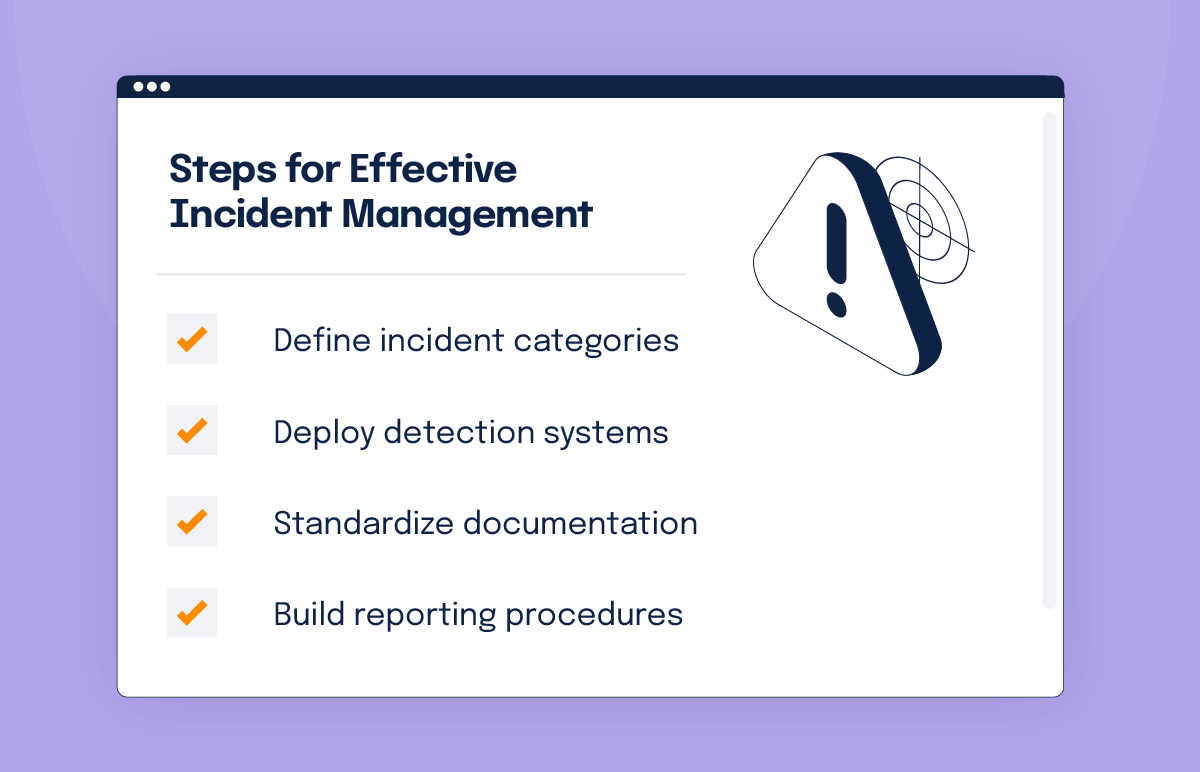
1. Define incident categories
Classifying incidents by impact on health and safety, fundamental rights implications, and service disruption extent could help prioritize response.
2. Deploy detection systems
Implementing automated monitoring, user reporting channels, and third-party monitoring might minimize business damage through faster detection.
3. Standardize documentation
Creating templated incident descriptions, consistent timeline tracking, and standardized impact assessment frameworks could speed resolution.
4. Build reporting procedures
Defining clear reporting thresholds, assigning specific reporting responsibilities, and creating templates for authority notifications might satisfy regulators while protecting reputation.
Effective incident management could create business value beyond compliance, potentially reducing financial losses from incidents, speeding recovery times, and preserving customer relationships.
Establishing cybersecurity protection measures
Article 55(1)(d) requires providers to implement “an adequate level of cybersecurity protection” for both the general-purpose AI model with systemic risk and its physical infrastructure. Comprehensive cybersecurity could create business value beyond compliance, potentially protecting revenue streams, preventing breach costs, and maintaining intellectual property value. A comprehensive approach might include:
Implement model-specific protections
Deploying access controls for model weights, encrypting model files, and creating integrity verification mechanisms could maintain a competitive advantage.
Protect training and inference infrastructure
Implementing physical security, network segmentation, and intrusion detection systems might maintain operational continuity.
Adopt secure development practices
Conducting code security reviews, verifying supply chain security, and applying secure coding standards could reduce remediation costs.
Build incident response capabilities
Deploying breach detection systems, creating containment procedures, and establishing response plans should minimize breach costs.
Leveraging Article 56: Codes of Practice
Monitoring the development of official codes of practice
Article 56 tasks the AI Office with encouraging and facilitating the creation of codes of practice by May 2, 2025. These codes, which have not yet been released as of May 2, may provide guidance on implementing Articles 53 and 55 obligations. Active monitoring and engagement with code development could provide competitive advantages, potentially providing early intelligence on requirements, reducing compliance surprises, and creating opportunities to influence standards. Due to the delays, organizations might consider:
Create tracking systems
Registering for AI Office notifications, joining industry associations, and monitoring public consultations could provide early intelligence.
Identify participation opportunities
Assessing eligibility for drafting participation, preparing responses to input requests, and forming industry consortia might help shape codes to align with your business needs.
Allocate resources for analysis
Assigning staff to review drafts, scheduling regular assessment of evolution, and developing impact assessment methodologies could speed implementation planning.
Prepare internal stakeholders
Briefing executives, creating information-sharing mechanisms across departments, and building consensus on preferred approaches might reduce implementation friction.
Implementing codes of practice in your compliance program
Once finalized, codes of practice offer a path to demonstrate compliance with Articles 53 and 55 until harmonized standards appear. Here are four steps for effective implementation:
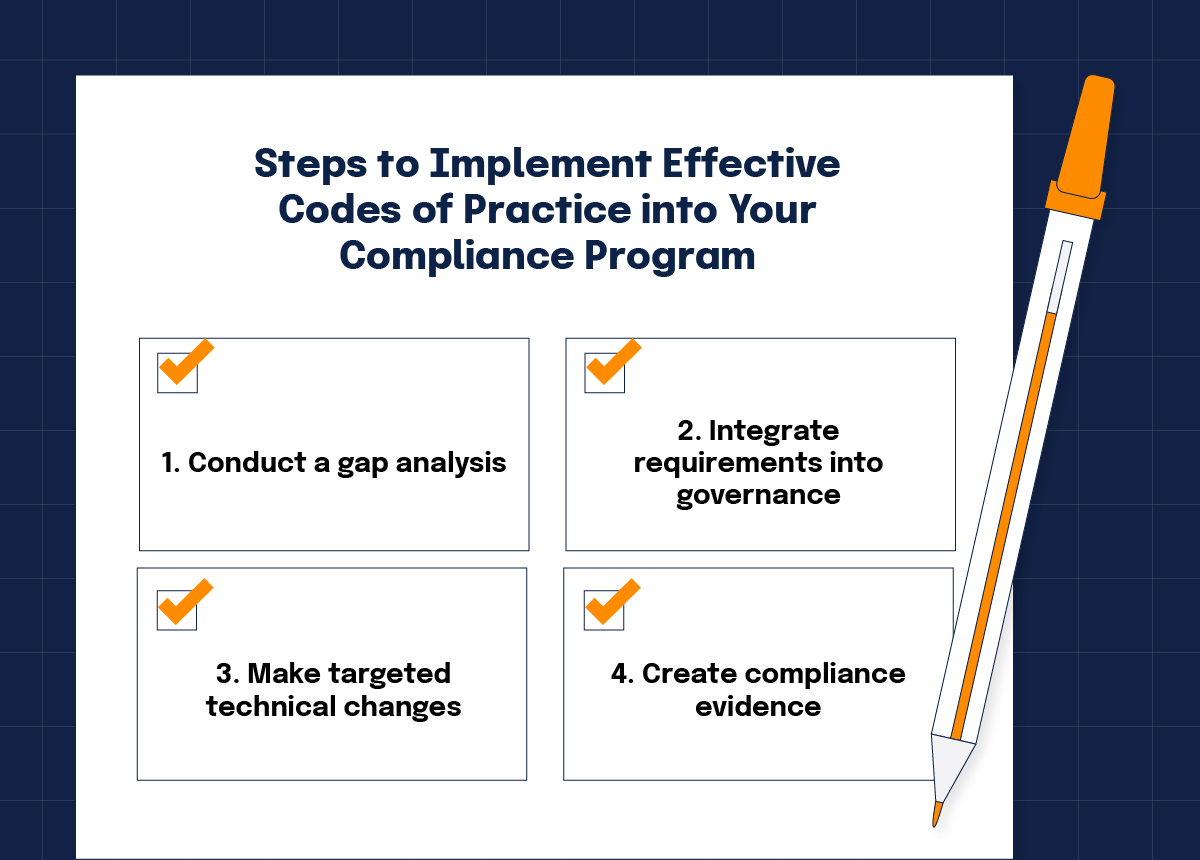
Conduct a gap analysis
Comparing code requirements with current practices and prioritizing compliance gaps by business impact could focus resources on high-value changes. Hyperproof can help organizations conduct a gap analysis by comparing code requirements with their current compliance frameworks. With Hyperproof, you can map controls and policies to regulatory provisions, helping to identify compliance gaps. This centralized approach reduces fragmentation by combining compliance tasks and risk management workflows.
Integrate requirements into governance
Updating policies, aligning risk management, and adding code requirements to audit programs improve operational efficiency. Hyperproof’s platform streamlines the process of embedding new code requirements into existing control frameworks by maintaining policy version control to track and communicate changes.
Make targeted technical changes
Updating policies, aligning risk management, and adding code requirements to audit programs improve operational efficiency. Hyperproof’s platform streamlines the process of embedding new code requirements into existing control frameworks by maintaining policy version control to track and communicate changes.
Create compliance evidence
Developing code-specific documentation, mapping evidence to code provisions, and establishing verification procedures might speed audits and regulator reviews. Hyperproof streamlines verification procedures by maintaining an auditor-friendly repository where all documentation is organized for review during audits or regulator inspections. This capability can reduce the time spent on audits and regulator reviews by providing clear, code-specific documentation and mapped evidence.
Strategic implementation of codes of practice could deliver business benefits, potentially reducing compliance costs through standardized approaches, speeding time-to-market, and increasing customer confidence.
Developing alternative compliance approaches
Article 55(2) allows providers who don’t follow approved codes or harmonized standards to “demonstrate alternative adequate means of compliance for assessment by the Commission.” Alternative compliance approaches could provide flexibility while meeting regulatory objectives, potentially allowing businesses to implement methods better suited to their technologies and business models. Organizations should consider:
Building a compelling business case
Documenting where standard approaches conflict with your business model and identifying areas where alternative methods provide superior protection could support your position.
Designing comprehensive alternative frameworks
Creating risk identification approaches aligned with your products and implementing relevant performance measurement systems might address core regulatory concerns through different means.
Implementing validation methods
Engaging third-party verification and applying scientific validation methodologies could build credibility for your approach.
Creating persuasive demonstration materials
Documenting alternative methods, preparing side-by-side equivalence demonstrations, and tracking effectiveness metrics might support your case with regulators.
Building organizational readiness
Before implementing specific Chapter 5 requirements, we recommend assessing current capabilities against future obligations by conducting a gap analysis and compliance readiness assessments. Thorough gap analysis could create business value by preventing wasted resources, prioritizing high-value compliance activities, and creating a strategic implementation roadmap. Follow these steps:
Use structured assessment methodologies
Creating a comprehensive requirements inventory and developing assessment criteria tied to business impact could produce actionable results.
Evaluate current capabilities
Reviewing technical documentation, assessing model development practices, and analyzing risk frameworks might identify gaps across business dimensions.
Analyze gaps with business context
Quantifying deficiencies by business impact and identifying common causes across multiple gaps could inform implementation planning.
Prioritize remediation
Considering compliance deadlines, implementation complexity, and potential risk exposure might help focus resources on high-value activities.
Establishing AI governance structures
Well-designed governance could deliver business benefits beyond compliance, potentially improving decision quality, speeding response to market changes, and preventing costly mistakes. Compliance with Chapter 5 requires clear governance with defined responsibilities and accountability mechanisms:
Create a multilevel governance framework
Defining board-level oversight, executive accountability, and working group responsibilities could balance control with agility.
Assign specific roles
Designating an AI compliance officer, technical documentation owners, and incident management coordinators with appropriate authority might improve accountability.
Implement decision structures
Defining risk acceptance thresholds, compliance investment approval processes, and exception management procedures could balance speed with quality. Hyperproof’s risk management capabilities allow organizations to set and monitor risk thresholds, ensuring that decisions are made within acceptable limits. Hyperproof’s integration with existing systems and tools facilitates transparent approval processes and exception management, balancing speed with quality.
Build oversight mechanisms
Implementing regular compliance reporting to executives and conducting periodic compliance testing might prevent compliance drift. Hyperproof helps build oversight mechanisms by enabling regular compliance reporting to executives and conducting periodic compliance testing. The platform’s continuous monitoring and real-time alerts ensure that any deviations from governance policies are quickly identified and addressed. Hyperproof’s automated evidence collection and reporting features provide a clear audit trail, supporting regular compliance reviews and preventing compliance drift.
Budgeting for compliance implementation
Implementing Chapter 5 requirements demands significant resources. Proper budgeting could prevent compliance delays due to resource constraints while enabling efficient allocation across requirements and supporting accurate financial planning.

Map resource requirements
Calculating personnel costs, estimating technology investments, and projecting external expertise needs could provide a comprehensive view.
Create detailed implementation cost estimates
Basing calculations on gap analysis findings and researching current market rates for specialized skills might improve accuracy.
Develop phase-based budgets
Allocating resources for assessment, documentation development, system implementation, and ongoing maintenance could align with implementation stages.
Include contingency provisions
Accounting for potential regulatory clarifications and implementation challenges might protect against unexpected costs.
Staff training and awareness programs
Comprehensive training could deliver business benefits beyond compliance, potentially reducing errors, speeding implementation, and building a stronger compliance culture. Successful implementation depends on staff understanding their compliance roles and possessing appropriate skills:
Identify training needs by role
Developing executive briefings, technical implementation guides, and general awareness materials tailored to different functions might improve effectiveness.
Implement multi-channel delivery
Conducting in-person workshops for complex topics and offering online modules for foundational knowledge could increase accessibility.
Verify knowledge acquisition
Implementing assessments and assigning practical exercises might reduce compliance risk through confirmed understanding.
Establish continuous learning
Updating training for regulatory changes and incorporating implementation lessons could maintain compliance over time.
Implementation roadmap and timeline
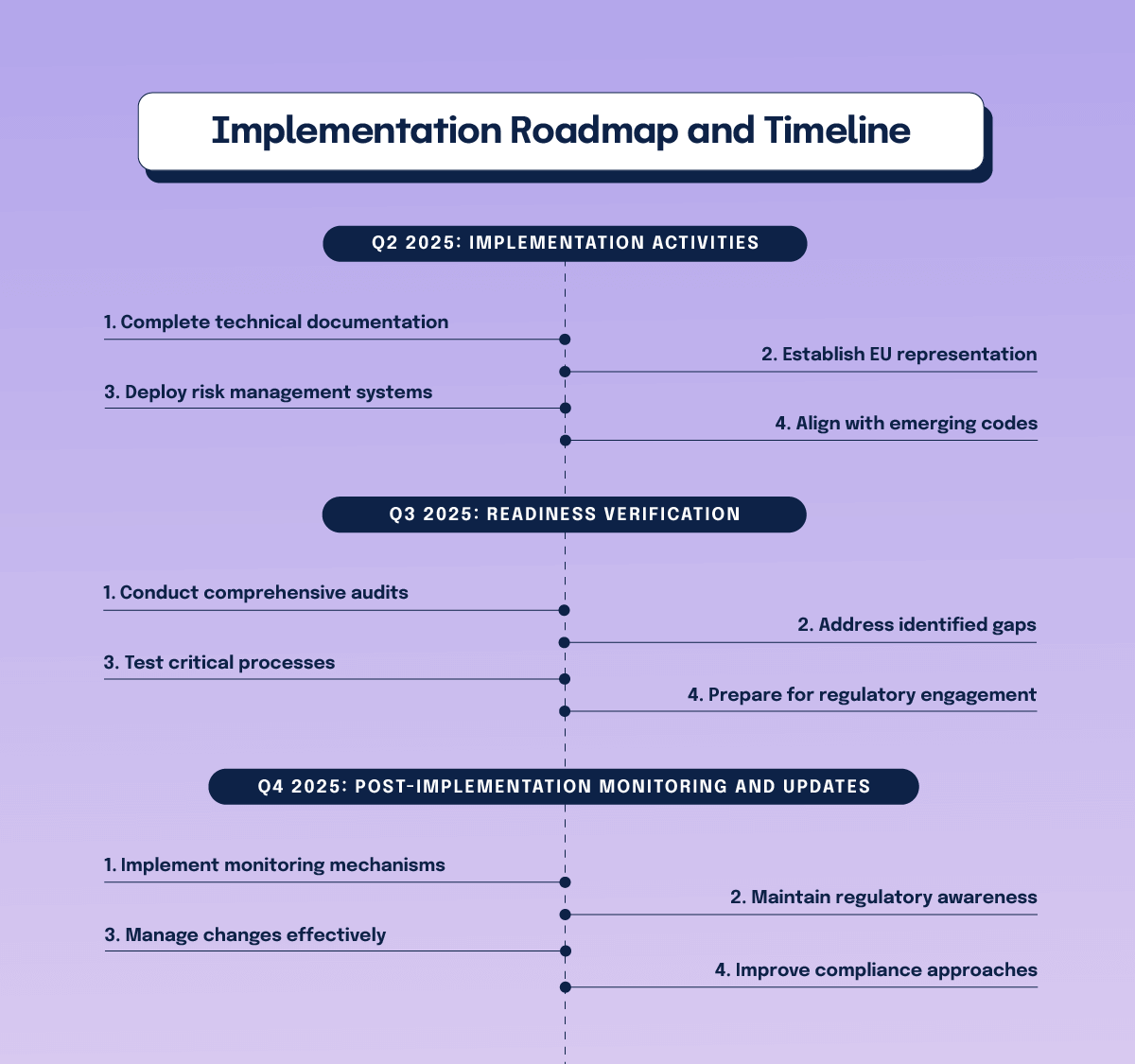
Q2 2025: Implementation activities
This implementation phase transforms plans into operational capabilities that directly support compliance requirements while potentially building market credibility and creating first-mover advantages.
Complete technical documentation
Finalizing detailed documentation for GPAI models, creating downstream provider information packages, and implementing version control procedures might satisfy Article 53.
Establish EU representation
Selecting representatives, executing mandates, and testing communication procedures could address Article 54 requirements.
Deploy risk management systems
Implementing model evaluation protocols, creating risk assessment frameworks, and establishing cybersecurity measures might fulfill Article 55 obligations.
Align with emerging codes
Analyzing draft code requirements, addressing gaps, and developing reporting capabilities could prepare for Article 56 compliance.
Q3 2025: Readiness verification
With the August 2, 2025, deadline approaching, verifying compliance status will be necessary: Thorough verification could prevent business disruption from compliance issues, potentially avoiding penalties and maintaining market access.
Conduct comprehensive audits
Reviewing documentation, testing representation arrangements, and validating risk frameworks against standards could identify remaining gaps.
Address identified gaps
Prioritizing deficiencies by compliance impact and strengthening processes with identified weaknesses might ensure complete readiness.
Test critical processes
Running documentation retrieval simulations and conducting incident reporting exercises could verify operational readiness.
Prepare for regulatory engagement
Creating response procedures and developing compliance demonstration materials might ease potential interactions with authorities.
Q4 2025: Post-implementation monitoring and updates
Active compliance management after implementation could protect revenue streams in regulated markets while potentially enabling business agility through regulatory awareness. Compliance with Chapter 5 requires continuous adaptation to changing requirements and technology:
Implement monitoring mechanisms
Conducting regular assessments and reviewing documentation currency could maintain compliance over time.
Maintain regulatory awareness
Following AI Office guidance, tracking code evolution, and observing enforcement actions might provide a competitive advantage.
Manage changes effectively
Assessing the compliance impact of model updates and adapting practices as standards evolve could maintain compliance despite changes.
Improve compliance approaches
Analyzing process effectiveness and implementing lessons from experience might increase business efficiency.
Compliance as a competitive advantage
Compliance with Articles 53-56 appears to represent not just a regulatory obligation, but potentially a strategic business opportunity. Organizations that implement comprehensive documentation, representation, risk management, and governance systems may gain significant market advantages.
By approaching compliance strategically, forward-thinking companies might transform these requirements into business differentiators: demonstrated trustworthiness could attract customers concerned about AI risks; thorough documentation might reduce liability exposure; robust risk assessment may improve product quality; and effective governance could speed decision-making in rapidly changing markets. Hyperproof is a modern enterprise GRC solution with an out-of-the-box framework template for the EU AI Act that can help you manage this complex framework at scale.
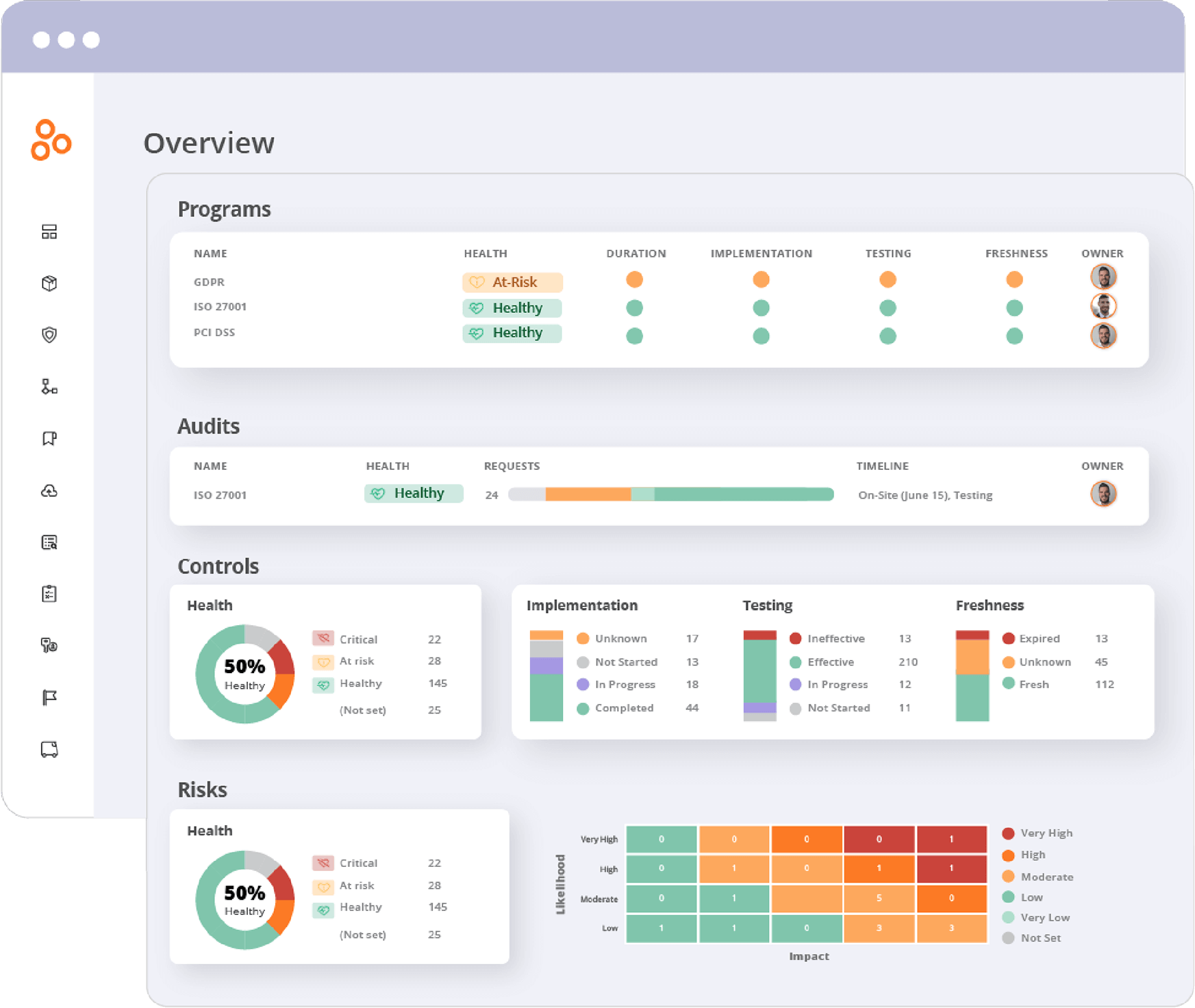
With the August 2025 deadline approaching, organizations that begin preparation now likely face lower implementation costs and less business disruption than those pursuing last-minute compliance. By integrating these requirements with a SaaS-based compliance management platform and broader business strategies, companies may turn these regulatory obligations into competitive advantages in an AI marketplace where trust and responsible practices increasingly drive customer decisions.
See Hyperproof in Action
Related Resources
Ready to see
Hyperproof in action?



